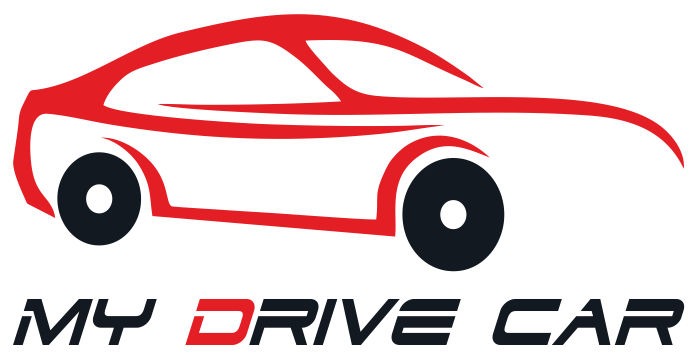The Future of Automobiles: 7 Most Advanced Technologies Used in Electric Vehicles
Last updated on July 19th, 2024 at 07:48 am
The automotive industry is developing by leaps and bounds. If earlier a car was a privilege, now it is a convenient and affordable thing for business, home, and travel needs.
Today, arranging a set of wheels anywhere in the world is a simple task. For example, you can book a minibus hire at Faro Airport if you are going to travel around Portugal with your family. Driving a car hire in Portugal is the perfect way to explore local attractions at your own pace. Plus, you get access to the best car hire service options, including unlimited miles, zero-excess insurance, and a fleet of electric vehicles, of course.
Yes, modern electric cars deserve special attention because of their progressiveness. Responding to consumer adoption and market trends, they contribute to the electric revolution due to the multiple advanced technologies involved. What are these technologies, and how do they help develop the automotive industry? Keep reading for more information…
Autonomous Driving
Self-driving capability is the main feature of electric vehicles. Nevertheless, mass-produced cars that can move without the participation of the driver don’t yet exist. Modern models are currently at autonomy level 2-3, that is, the driver still needs to take control of the car if necessary.
The most famous self-driving electric car is Tesla, a trendsetter in this field. So, the Tesla Model S with the Enhanced Autopilot has 12 ultrasonic sensors and 4 cameras that control the car. The vehicle can park on its own, change lanes, drive through the city streets, take highway exits, and stop when an obstacle appears ahead.
The BMW iX has gone even further with its Driver Assistant Professional. The system includes 12 ultrasonic sensors, 5 radars, and 5 cameras, thanks to which it was possible to achieve the 3rd level of autonomy – the driver doesn’t need to constantly keep his hands on the steering wheel. The car will require you to return to control at the right time by turning on the yellow steering wheel illumination.
Voice control and voice recognition
Almost all modern electric vehicles have a voice recognition system but some manufacturers offer increased capabilities. For instance, the Volvo XC40 P8 Recharge works with Google Assistant. The virtual assistant understands natural speech well, and the driver can use his voice to control multiple functions – from adjusting the climate system and setting the location in the navigator to changing the radio station and sending messages.
At the same time, Volkswagen ID 3, 4, and 5 boast a Hello ID system with Cerence voice assistant. It recognizes natural speech, and can also determine who is speaking at the moment. Thanks to the integration with the colour-changing cabin LED backlight, the driver and passengers will understand whether the assistant is listening to them at the moment.
In the new BMW iX, Amazon’s Alexa assistant responds to more than just simple commands. If you say “I’m tired” to the assistant, the car will change the lighting and temperature in the cabin, as well as turn on more energetic music to help the driver cheer up.

Camera system for environment tracking and face recognition
Cameras in modern electric vehicles are responsible for more than just parking and safety. For example, in the Genesis GV60, the Face Connect system allows the crossover to recognize its owners by their faces! An electric car can keep two people in mind. After recognizing the owner, the GV60 will open the door, adjust the position of the seat/rear-view mirrors, and activate the favourite playlist and the display interface.
In turn, Tesla has developed a special Sentry mode. The vehicle’s cameras serve as a monitoring system for the surrounding area: if someone gets too close to the car, the owner receives a notification on the phone and access to live video.
Infotainment system
The developers of modern EVs pay great attention to infotainment systems. No more outdated radios or CD players – just a convenient touch screen and constant system updates.
So, many compare the Tesla Model S, Y, and X to a laptop on wheels. A 15-17-inch display built into the centre console can be used by both driver and passenger. In addition to controlling all the systems of an electric car, a large touchscreen offers to diversify a long journey by watching TV shows or playing video games. Also, you can use it, for example, to select places of interest in Cornwall, or find a useful guide for driving in Portugal. The infotainment system of a modern electric car is turning into a multifunctional tool with hundreds of options available.
Remote control
Most electric vehicle manufacturers develop special applications for remote control of vehicle systems. So, an Internet connection allows you to remotely control the charging process and warm up or cool down the interior. Through mobile applications, you can upload routes to the navigator, search for a car in the parking lot, or reserve a charging station so as not to waste time in line. Also, they make it possible to transmit live video from external cameras if someone comes close to the vehicle. For example, the Mercedes Me Connect app allows you to control vehicle systems, view the battery level and tire pressure, remotely lock and unlock doors, open windows and sunroof, and much more.

Energy storage
Electric vehicles are huge-capacity batteries on wheels. With a battery capacity of between 50 and 100 kWh, some manufacturers offer the technology to distribute electricity from an EV to other devices and vehicles.
In particular, the Pro Power Onboard technology in the Ford F-150 Lightning turns the car into an energy storage device with a capacity of up to 9.6 kW. It powers electrical appliances through 11 sockets located in the cab, body and trunk. In Charge Station Pro mode, the electric auto becomes a household energy storage device and allows you to power a medium-sized house for three days.
At the same time, Kia EV6 supports a load of up to 3.6 kW and can, for example, serve as a power source for a 55-inch TV and air conditioner for more than a day. If necessary, this system can also be used to recharge another electric vehicle.
Smartphone or card instead of a key
Manufacturers of electric cars have abandoned traditional keys and key fobs. Instead, the driver uses an NFC key card or smartphone for access. In the new Volvo XC40 Recharge, the starting mechanism is located in the driver’s seat – all you have to do is take your seat with the map in your pocket and the engine will start. At the same time, the Tesla Model 3 automatically unlocks the doors and prepares to drive when the owner’s smartphone is detected within Bluetooth range.
So, electric cars are about energy efficiency and innovative technologies. Autonomous systems, keyless entry, remote control, and voice recognition make driving easier and more enjoyable. With every new model, engineers are introducing something unique and cutting-edge, leading to the rapid development of the EV industry.




